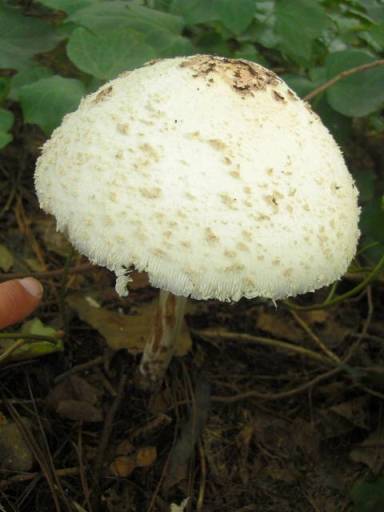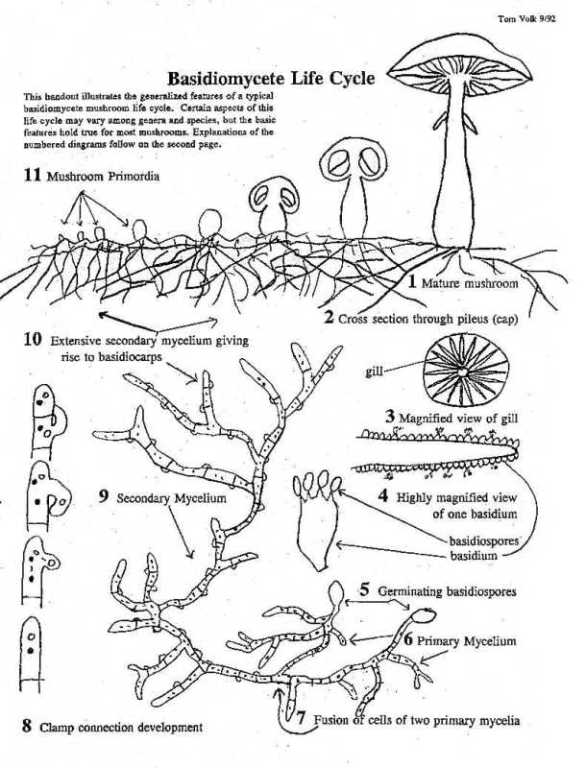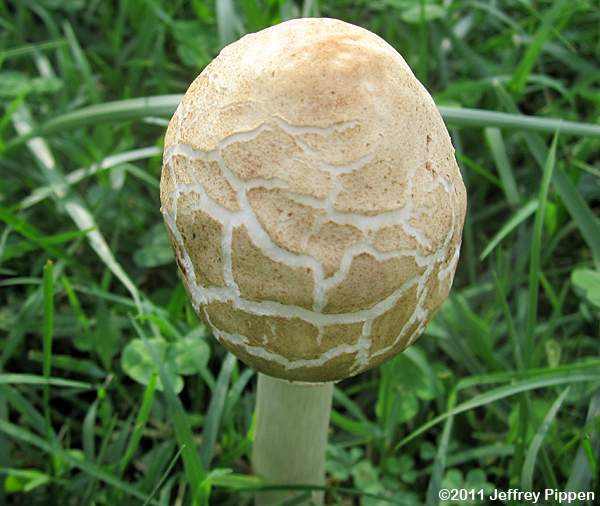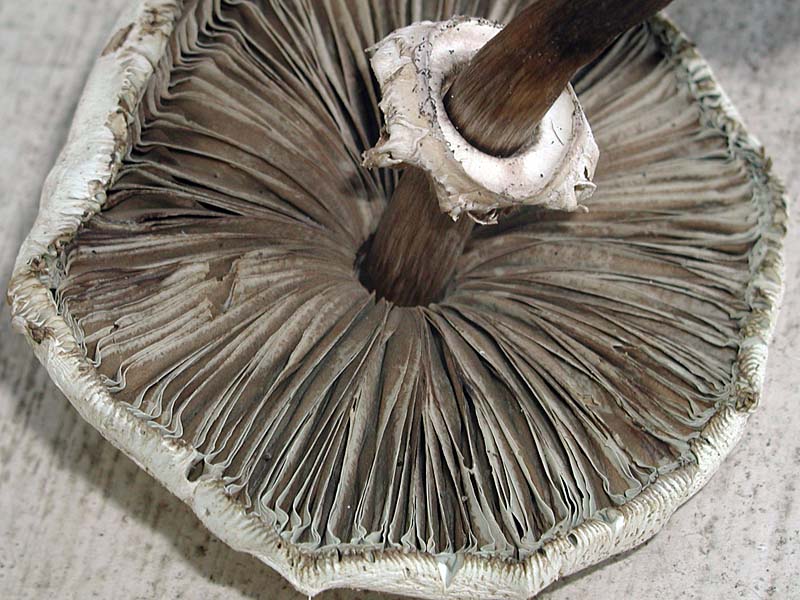Risqué Reproduction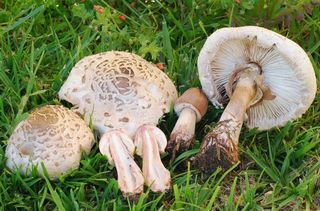
We often think of fungi as the white puffy things above
the surface, however most of it
actually lives underground. The mycelium is made up of hyphae (threadlike filaments) that connect to dead things
in the soil or with tree roots. What we see above ground is only
found when the mushroom is ready to reproduce sexually. This is
also called the fruiting body. Like plants, fungi have
alternation of generations. Many phylums can reproduce
asexually, however basidiomycota cannot reproduce asexually.
Fungi have sex?!
Yes, they do, here's a bit more information about how they reproduce! The mushroom
gills are lined with cells called basidia used
to reproduce by making spores. Two haploid nuclei fuse together by
karyogamy to form a diploid nucleus. This happens in the
mature mushroom represented in the picture below and to the right by (1). This stage then
undergoes meiosis to produce four haploid cells
which migrate into the basidiospores which are then
released by the wind to land in other areas. These basidiospores
then undergo mitosis to produce hyphae that make up
a mycelium (5). Two of these different mycelium then come together by
plasmogamy (7). Plasmogamy is when two cells share
cytoplasm but their nuclei do not combine. There are two sets of DNA
and nuclei living in one cell during this stage, termed
dikaryon. After a lot of growth this dikaryon mycelium
gives rise to basidiocarps (10). This completes the
life cycle and another mushroom can be seen (1).
This is just a general overview of a
Basidomycota life cycle. C. molybdites may have some
smaller details that are different, but for the most part all of the
species follow this life cycle because they get classified by how
they reproduce.
The picture to the left is an immature mushroom before it has
started to flatten out. The picture to the right is showing the
extensive gills of a mature mushroom. These gills have big
indentations to try and maximize their surface area for spore
dispersal.
Home Page Next Page: Interactions
